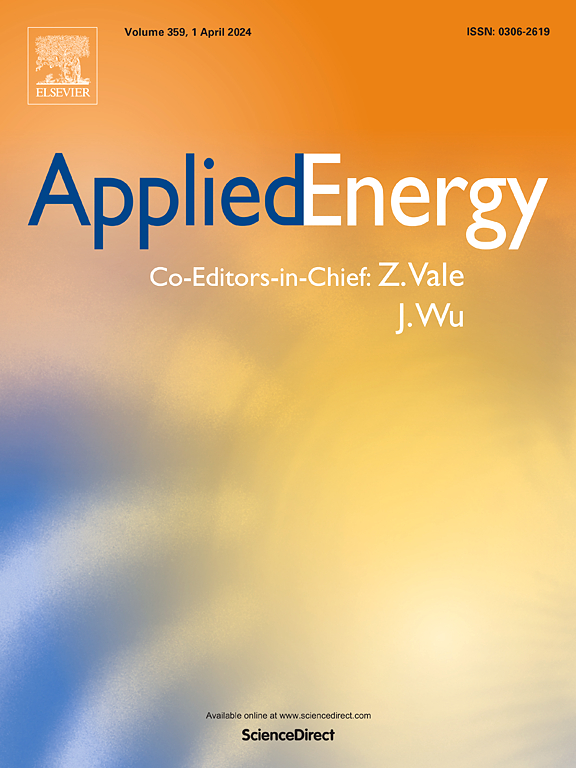Distributed voltage control for multi-feeder distribution networks considering transmission network voltage fluctuation based on robust deep reinforcement learning
IF 10.1
1区 工程技术
Q1 ENERGY & FUELS
引用次数: 0
Abstract
In the multi-feeder distribution network, the power balance between photovoltaics generations and load demands across regions is more complex. To solve the above problems, this paper proposes a multi-agent distributed voltage control strategy based on robust deep reinforcement learning to reduce voltage deviation. The whole multi-feeder distribution network is divided into a main agent and several sub-agents, and a multi-agent distributed voltage control model considering the transmission network voltage fluctuations and the corresponding power fluctuations is established. Based on the information uploaded by sub-agents, the main agent models the uncertainty of the transmission network voltage fluctuations and the corresponding power fluctuations as a disturbance to the state, and a RDRL method is employed to determine the tap position of on-load tap changer. Furtherly, each sub-agent uses the second-order cone relaxation technique to adjust the reactive power outputs of the inverters on each feeder. The effectiveness of the proposed method has been verified in two real-world multi-feeder systems. The results show that the proposed method can achieve millisecond-level decision-making, with a voltage deviation only 1.28 % higher than the global optimal results, achieving near-optimal control. The proposed method also demonstrates robustness in handling transmission network uncertainties and partial measurement loss.
基于鲁棒深度强化学习的考虑输电网电压波动的多馈线配电网分布式电压控制
在多馈线配电网中,光伏发电机组之间的功率平衡和跨区域的负荷需求更为复杂。针对上述问题,本文提出了一种基于鲁棒深度强化学习的多智能体分布式电压控制策略,以减小电压偏差。将整个多馈线配电网划分为一个主agent和几个子agent,建立了考虑输电网电压波动和相应功率波动的多agent分布式电压控制模型。基于子agent上传的信息,主agent将输电网电压波动和相应功率波动的不确定性作为状态扰动进行建模,并采用RDRL方法确定有载分接开关的分接位置。此外,每个子智能体使用二阶锥松弛技术来调节每个馈线上逆变器的无功输出。在两个实际的多馈线系统中验证了该方法的有效性。结果表明,该方法可以实现毫秒级的决策,电压偏差仅比全局最优结果高1.28%,实现了近最优控制。该方法在处理传输网络不确定性和部分测量损失方面具有鲁棒性。
本文章由计算机程序翻译,如有差异,请以英文原文为准。
求助全文
约1分钟内获得全文
求助全文
来源期刊

Applied Energy
工程技术-工程:化工
CiteScore
21.20
自引率
10.70%
发文量
1830
审稿时长
41 days
期刊介绍:
Applied Energy serves as a platform for sharing innovations, research, development, and demonstrations in energy conversion, conservation, and sustainable energy systems. The journal covers topics such as optimal energy resource use, environmental pollutant mitigation, and energy process analysis. It welcomes original papers, review articles, technical notes, and letters to the editor. Authors are encouraged to submit manuscripts that bridge the gap between research, development, and implementation. The journal addresses a wide spectrum of topics, including fossil and renewable energy technologies, energy economics, and environmental impacts. Applied Energy also explores modeling and forecasting, conservation strategies, and the social and economic implications of energy policies, including climate change mitigation. It is complemented by the open-access journal Advances in Applied Energy.
 求助内容:
求助内容: 应助结果提醒方式:
应助结果提醒方式:


